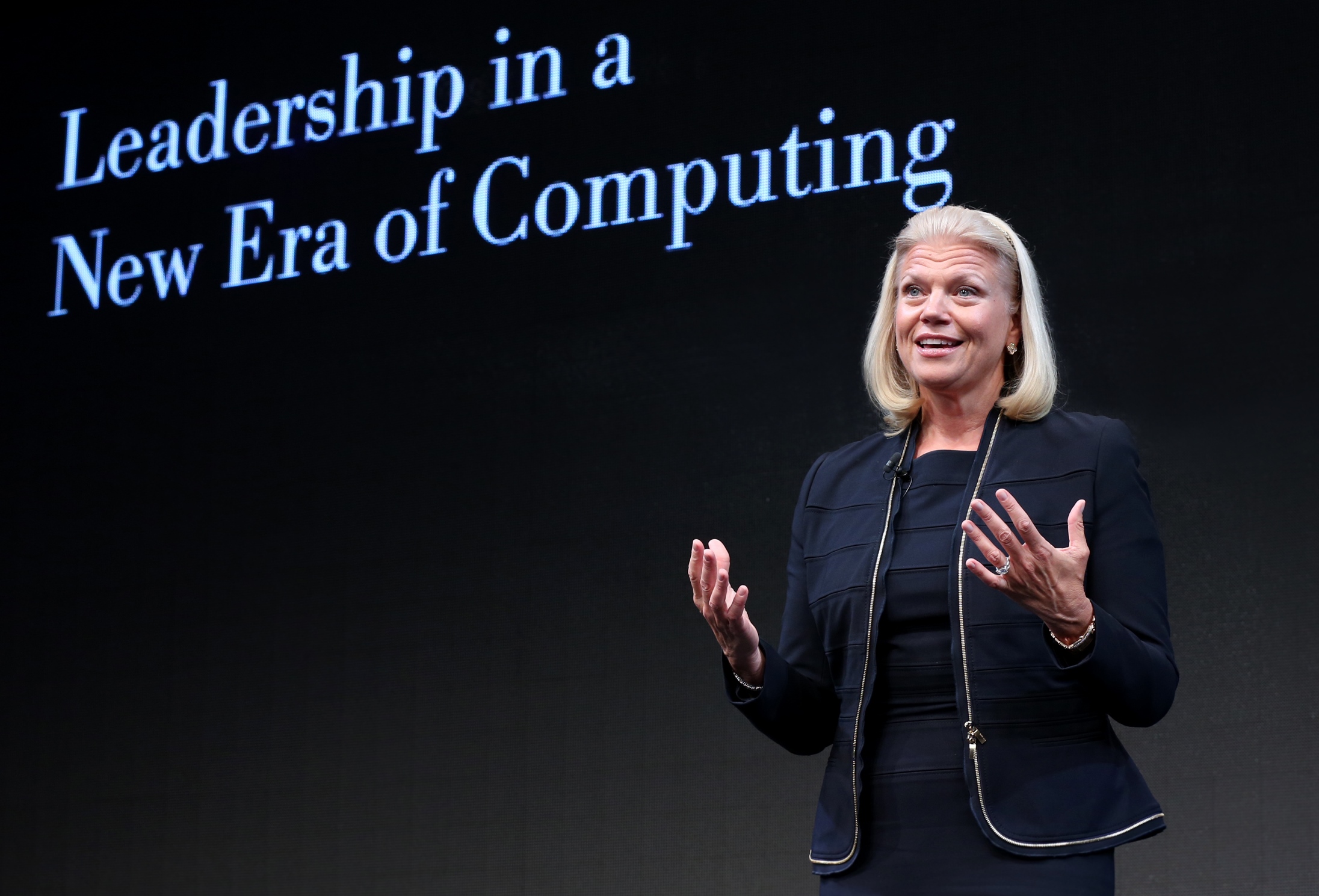IBM's Rometty pitches 'high value innovation', reinvention, $4 billion more into growth businesses

IBM CEO Ginni Rometty said the company is about "high value innovation" focused on the enterprise and will plow $4 billion into areas such as analytics, cloud, mobile and security to grow.
Rometty's talk on Thursday with Wall Street (see Webcast) comes during a transitional period for IBM. The company is seeing revenue declines in most units as it transitions to new businesses such as mobile, cloud, e-commerce, analytics and cognitive computing.
The IBM CEO aimed to give "clarity in IBM's future" and highlight the progress moving into areas such as cloud, e-commerce and cognitive computing. For instance, hardware is less than 10 percent of IBM's business as "strategic imperatives" accounted for 27 percent of revenue. Over the next 4 years, IBM expects growth businesses will be 40 percent of revenue.
Rometty also said that IBM will provide details on where it hopes to differentiate its growth businesses and partner where it makes sense. Rometty said the Apple partnership is the beginning of strategic deals to grow the business. IBM's recent deal with Softbank for Watson is another example. Rometty also said that she wanted analysts to try out Watson to experience cognitive computing. IBM also said it would communicate more often and do deep dives on its growth businesses.
"IBM is reinvented," she said. "We sit in a unique position in business and technology."
Broadly speaking, Rometty is hitting three themes for shareholders and Wall Street as she outlines the master plan for the enterprise. Those bullets are:
- IBM will increase spending and shift $4 billion into strategic imperatives. This investment doesn't include acquisitions.
- Continue to innovate in the core portfolio in areas ranging from software to mainframes to storage and services.
- Build a new growth strategy around open ecosystems and partnerships. (Partnerships are) "a way to monetize our innovation and scale it. It started with the Apple partnership, but Watson and Softbank is another example," said Rometty.
As for the financial side of the equation, IBM is aiming to grow revenue in single digits with double-digit earnings per share growth. Rometty argued that IBM's revenue decline in 2014 has been partly engineered by the company to enter new markets.
The company essentially maintained its recent projections. What's worth examining is how IBM plans to deliver those long-term financial goals.
Big Blue is looking for the following from its core business:
- A hardware business that is stable and profitable with IBM's next-gen mainframe, Power 8 high end servers, the Power line and software defined storage driving 2015 returns.
- A low single digit revenue growth pace for its software unit. IBM sees software revenue taking a hit due to "flexibility offered to our largest clients." In other words, IBM is willing to give a bit on software sales if it can keep customers on its platform and pull in other core businesses such as services.
- Services to pull in big data projects as well as cloud deployments. Low single digit revenue growth is the long term projection.
But the future growth for IBM will be in cloud, mobile, security and analytics as well as partnerships. The market for these new units is IBM's core customers---80 percent of these corporations deploy Big Blue's services, software and hardware.
The big question is whether IBM can differentiate from the pack in these markets. Rometty and CFO Martin Schroeter are betting that way.
Here's a look at what IBM sees as its competitive edge.
The elephant in the room during IBM's investor day is timing. IBM laid out what appears to be a realistic roadmap, but it remains to be seen how much patience there is in a 3 year plan to grow its new units.
Also see:
- IBM's Q4: Every core unit saw revenue declines
- IBM dismisses massive layoff report as workforce remixing continues
- The Apple-IBM partnership: Apple spoils early, Big Blue's later?
- Annual rite: IBM layoffs, rebalancing underway
- IBM bulks out Watson for developers with speech, visual, and concept features